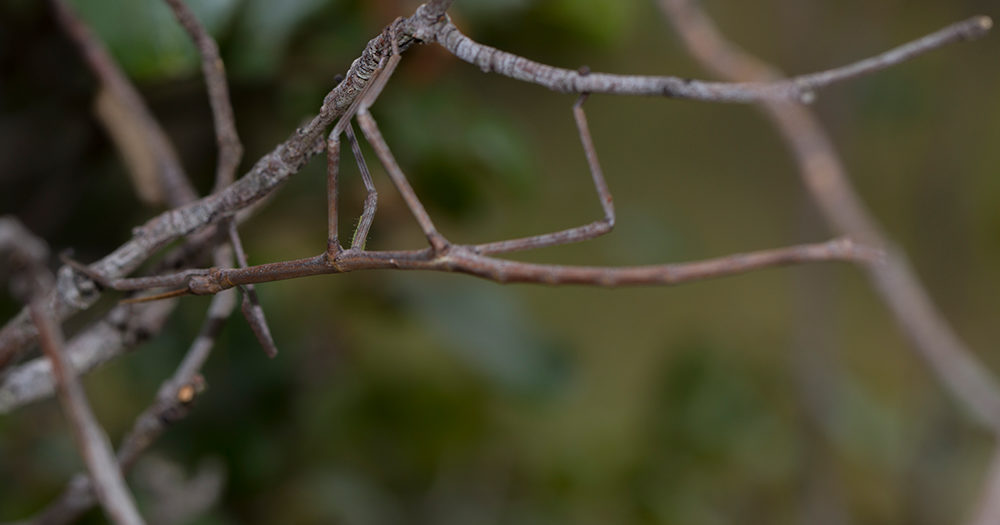You have to look very closely to discover this Malagasy camouflage artist. Achrioptera impennis, that’s the scientific name, looks like a dry branch. But in fact, it is a living animal. Achrioptera impennis belongs to the stick insects (Phasmatodea). These are herbivorous, harmless insects that camouflage themselves perfectly in the middle of their own food by their extremely deceptive appearance. This camouflage is called phytomimesis.
Several species of stick insects live in Madagascar. Achrioptera impennis is probably one of the largest of them. Individual females can reach an impressive twenty centimeters in length. And the arms and legs are not even measured! The males remain somewhat smaller, averaging ten centimeters. They also have wings but are unable to fly because of their heavy body.
In order not to blow their camouflage against birds and reptiles, walking sticks move as slowly as possible. They sway slightly back and forth to imitate a thin branch in the wind. They also move as little as possible when feeding: only the head moves along the edge of the food leaf. In addition, walking sticks are nocturnal. During the day they rest in the bushes. Should a curious chameleon strike, Achrioptera has a remarkable ability: If the stick insect loses an arm or leg, it can let it grow back with the next molt. However, this ability only exists in nymphs, i.e. not yet fully grown walking sticks.
If you want to find the species in Madagascar, you should go on a search in the savannahs of Isalo in spring. The dry south of Madagascar is the home of these walking sticks. Their reproductive season is the rainy season when they find plenty to eat. This is also the time when the females lay the most eggs. The small, brown capsules simply fall to the ground and stay there. They resemble plant seeds and are therefore hardly visible to the eye. Only at the beginning of the next rainy season does the next generation of walking branches hatch.
 MADAMAGAZINE Your Magazine about Madagascar
MADAMAGAZINE Your Magazine about Madagascar






